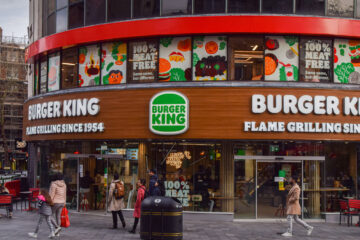Amazon became the latest retail giant to put out a strategy on rising fuel prices.
We’re all tired of hearing about rising gas costs but, unfortunately, the inflation is affecting many aspects of our daily lives. Driving is expensive, food delivery is (more) expensive and those who don’t own a car but take regular Ubers (UBER) – Get Uber Technologies, Inc. Report or Lyfts (LYFT) – Get Lyft, Inc. Class A Report also have to pay a fuel surcharge.
This week, Amazon (AMZN) – Get Amazon.com, Inc. Report became the latest retail and tech giant to put out a strategy on rising fuel prices. As they cover their own gas, drivers for on-demand delivery service Amazon Flex are most affected — the on-demand delivery service works like Uber or Lyft in that customers can order for food or common household goods to be delivered faster than regular shipping.
Amazon Flex Drivers Pay Their Own Gas
To compensate for rising fuel costs, Amazon is doubling the cashback rewards to up to 12% for those who use the Amazon Flex debit card (for others, it will be less but still higher than before).
Amazon’s delivery service partners and freight partners that use trucking companies to deliver goods to warehouses already have fuel covered by Amazon. A fuel surcharge covered by Amazon will also be added to small businesses who lend their trucks to transport Amazon goods.
“These freight carriers are also eligible to enroll in Amazon’s fuel discount program, which provides access to pre-negotiated fuel discounts at leading diesel merchants and thousands of independent locations across North America,” Amazon said in a statement.
Amazon also said that it would adjust driver compensation beyond the average $26 an hour in areas with the most rapidly-rising gas prices but did not elaborate on the specifics of by how much.
Should We Just Get Used To These Surcharges? Probably
As Western countries responded to Russia’s invasion of Ukraine with sanctions and boycotts, global gas prices quickly soared given much of the world’s dependence on Russian oil.
After the average cost of a gallon of regular gas in the U.S. hit a high of $4.33 two weeks ago, Uber, Lyft, Doordash (DASH) – Get DoorDash, Inc. Class A Report and Instacart all aded a fuel surcharge in order to help drivers most affected by rising costs.
By Thursday of this week, gas prices have edged lower, but, at $4.225 a gallon, are still nearly 40% higher than they were a year ago.
While many of the companies that instituted surcharges stressed that they are a temporary measure, Russia’s prolonged attack on Ukraine and general inflation could make them a regular part of life.
“We are continuing to closely monitor this situation to determine if we need to make future adjustments to support our transportation partners,” Amazon continued.

